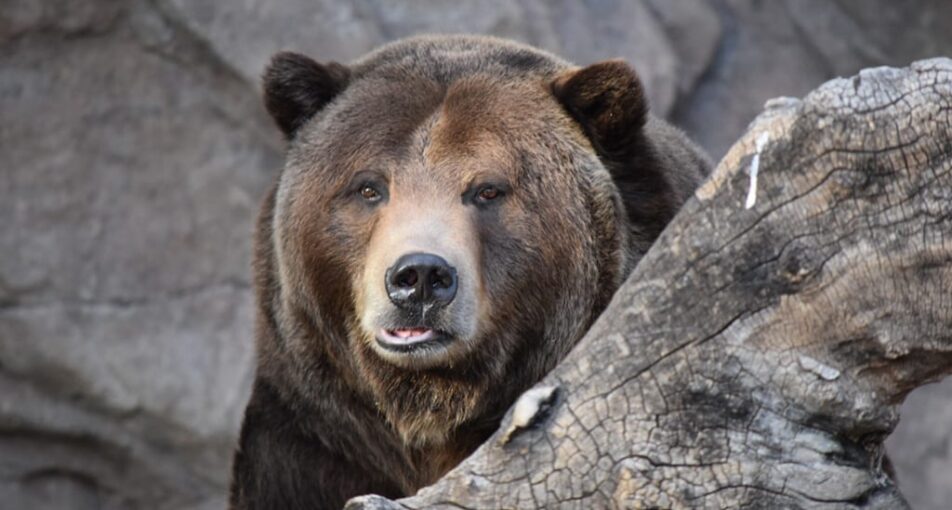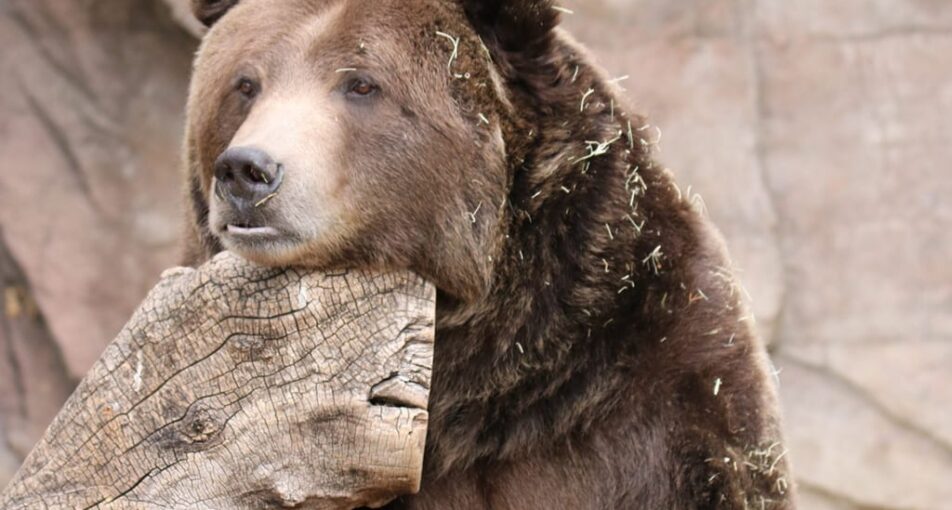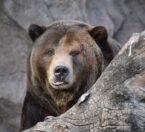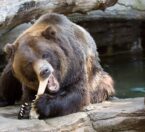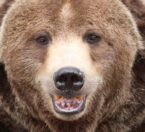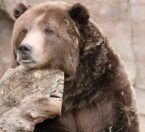Grizzly bears have sharp, curved claws up to five inches long on their front feet that are used for digging up food such as roots and invertebrates, catching fish, tearing apart rotten logs in search of food, or slicing into plant or animal matter. Their claws can come in handy when the bears dig their dens for winter hibernation.
Classification
| CLASS: | Mammalia |
| ORDER: | Carnivora |
| FAMILY: | Ursidae |
| GENUS: | Ursus |
| SPECIES: | arctos |
Habitat & Range
The grizzly bear inhabits dense forest, arctic tundra and sub-alpine mountain regions.
The grizzly bear is one of several subspecies of brown bear. Brown bears are found in parts of North America, Scandinavia to Eastern Europe, Syria to the Himalayas and the Pyrenees, Alps, and Carpathian mountains. Populations in Europe are very fragmented. In North America, the grizzly bear subspecies is prevalent in Alaska and northern Canada, and can extend into the North Western United States and along the Rocky Mountains.
Location


Adaptations
- Grizzlies have a large snout and nose with a sharp sense of smell to help them sniff out food. Bears also communicate by scent marking on trees and bushes including with their urine and feces.
- Grizzly bears can run up to 40 mph for short distances.
- Bears have large canines and smaller incisors for catching and killing prey, as well as large molars (broad flat teeth in the back of the mouth) that are used for crushing and grinding plant-based food. They also have massive skulls and strong jaw muscles that enable them to eat a varied diet.
- Due to the scarcity of food during the cold winter months, grizzly bears hibernate to survive. For six months or longer. During this time, grizzly bears survive on stored fat reserves built up during the spring and summer. During hibernation, they slightly reduce their body temperature and significantly reduce their heartbeat and respiration rate. While hibernating, they do not eat, drink, urinate or defecate.
- Bears in managed care settings like zoos, don’t usually hibernate. Food is available to them year-round so they don’t need to survive on fat reserves. At Denver Zoo, the bears are given the option to sleep as much as they would like or need to. Sometimes they will sleep for several days in the colder months.
Physical Description
- Grizzly bears can range from 3 feet to 9 feet (1-2.8 m) in length from head to tail.
- Males weigh 300-700 pounds (135-317 kg). On average, females weigh 10% less than males.
- The color of their fur can vary from blond to black, but they are usually brown with gray or “grizzled” tips.
- They have very large heads and large front paws with long, dull claws for digging.
- They have a distinctive muscular shoulder hump and small rounded ears.
Diet
What Does It Eat?
In the wild:
Grizzly bears are omnivorous and 75% of the food they eat is plant-based such as fruits, roots, grasses and nuts. Grizzly bears also eat fish, small mammals like rodents, and even scavenge larger prey like elk and moose.
At the zoo:
Bears are fed a seasonal diet that includes a variety of foods including fruits, vegetables, meat, fish, bones, nuts, lard, grass and browse.
What Eats It?
Grizzly bears are very large and aggressive towards threats so they are seldom the prey of other animals. Cubs can be attacked by other bears or large predators like mountain lions or wolves.

Social Organization
Grizzly bears are usually solitary, living and hunting alone with the exception of mating pairs and females with cubs.
Life Cycle
Grizzly bears reach sexual maturity at four to seven years of age. Females may mate with several males during the breeding season in May and June. Implantation of the fertilized egg is delayed until October or November when the female enters a den. From January to March two to three cubs are born weighing less than a pound (448 g). Cubs stay with their mother for two to three years before going out on their own. Cubs have a high mortality rate due to predators. Grizzlies can live up to 25 years in the wild and up to 30 years in human care.

